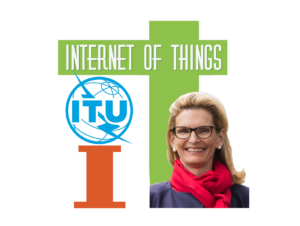In an earlier post [Connecting America & China], I discussed a massive multiplayer online (MMO) game called World of Warcraft that is making nearly a billion dollars annually for its U.S. developer, Blizzard Entertainment. World of Warcraft is a global phenomenon with more players in China than America. Richard Siklos writes about another virtual world that is making money — Second Life [“A Virtual World but Real Money,” New York Times, 19 Oct 2006].
It has a population of a million. The “people” there make friends, build homes and run businesses. They also play sports, watch movies and do a lot of other familiar things. They even have their own currency, convertible into American dollars. But residents also fly around, walk underwater and make themselves look beautiful, or like furry animals, dragons, or practically anything — or anyone — they wish. This parallel universe, an online service called Second Life that allows computer users to create a new and improved digital version of themselves, began in 1999 as a kind of online video game.
Siklos focuses on the fact that more than online players are being attracted to virtual worlds.
But now, the budding fake world is not only attracting a lot more people, it is taking on a real world twist: big business interests are intruding on digital utopia. The Second Life online service is fast becoming a three-dimensional test bed for corporate marketers, including Sony BMG Music Entertainment, Sun Microsystems, Nissan, Adidas/Reebok, Toyota and Starwood Hotels. The sudden rush of real companies into so-called virtual worlds mirrors the evolution of the Internet itself, which moved beyond an educational and research network in the 1990’s to become a commercial proposition — but not without complaints from some quarters that the medium’s purity would be lost.
It’s naive to believe that any medium that reach billions of potential customers is not going to be commercialized at some point. Siklos notes that the Internet is the world’s fastest growing advertising venue. People who immerse themselves in virtual worlds to escape the real one are not necessarily happy that corporations have found their way into those worlds as well.
For businesses, these early forays into virtual worlds could be the next frontier in the blurring of advertising and entertainment. Unlike other popular online video games like World of Warcraft that are competitive fantasy games, these sites meld elements of the most popular forms of new media: chat rooms, video games, online stores, user-generated content sites like YouTube.com and social networking sites like MySpace.com. Philip Rosedale, the chief executive of Linden Labs, the San Francisco company that operates Second Life, said that until a few months ago only one or two real world companies had dipped their toes in the synthetic water. Now, more than 30 companies are working on projects there, and dozens more are considering them. “It’s taken off in a way that is kind of surreal,” Mr. Rosedale said, with no trace of irony.
To be successful in a virtual world, however, you just can’t put up a billboard and expect anyone to pay attention. You have to provide real content — normally in the form of an entertaining experience. Siklos writes about Nissan’s move into Second Life.
In Second Life, a company like Nissan or its advertising agency could buy an “island” for a one-time fee of $1,250 and a monthly rate of $195 a month. For its new campaign built around its Sentra car, the company then needed to hire some computer programmers to create a gigantic driving course and design digital cars that people “in world” could actually drive, as well as some billboards and other promotional spots throughout the virtual world that would encourage people to visit Nissan Island.
Resilient corporations look for opportunities not just risks. Those that have ventured into virtual worlds are marketing pioneers on the cusp of what they hope is a new shopping environment. They are really just cutting their teeth with their initial trials.
Virtual world proponents — including a roster of Linden Labs investors that includes Jeffrey P. Bezos, the founder of Amazon.com; Mitchell D. Kapor, the software pioneer; and Pierre Omidyar, the eBay co-founder — say that the entire Internet is moving toward being a three-dimensional experience that will become more realistic as computing technology advances.
When Walt Disney opened Disneyland, he invented experiential entertainment. As people earned more disposable income in less time, they could afford both the time and money to be entertained in a new way. Those betting on virtual marketplaces are making the same bet Disney did, but shoppers only have to click onto the Internet instead of traveling to Anaheim to gain the experience. Siklos notes how the experiment is growing:
In Second Life, retailers like Reebok, Nike, Amazon and American Apparel have all set up shops to sell digital as well as real world versions of their products. Last week, Sun Microsystems unveiled a new pavilion promoting its products, and IBM alumni held a virtual world reunion. This week, the performer Ben Folds is to promote a new album with two virtual appearances. At one, he will play the opening party for Aloft, an elaborate digital prototype for a new chain of hotels planned by Starwood Hotels and Resorts. The same day, Mr. Folds will also “appear” at a new facility his music label’s parent company, Sony BMG, is opening at a complex called Media Island. Meanwhile, Nissan is introducing its Nissan promotion, featuring a gigantic vending machine dispensing cars people can “drive” around. And some of this is likely to be covered for the outside world by such business news outlets as CNet and Reuters, which now have reporters embedded full-time in the virtual realm. … Projects like the Aloft hotel, an offshoot of Starwood’s W Hotels brand, are designed to promote the venture but also to give its designers feedback from prospective guests before the first real hotel opens in 2008. The new Sony BMG building has rooms devoted to popular musicians like Justin Timberlake and DMX, allowing fans to mingle, listen to tunes or watch videos. Sony BMG is also toying with renting residences in the complex, as well as selling music downloads that people can listen to throughout the simulated world.
The company that operates Second Life, Linden Labs, makes most of its money selling “real estate” or should I say virtual estate for around $20/month/acre. You can own a private island for $195/month. Even more fascinating is the fact that Linden Labs generates income as a money changer.
Linden also makes money on exchanging United States dollars for what it calls Linden dollars for around 400 Linden dollars for $1 (people can load up on them with a credit card). A typical article of clothing — say a shirt — would cost around 200 Linden dollars, or 50 cents. As evidence of the growth of its “economy,” Second Life’s Web site tracks how much money changes hands each day. It recently reached as much as $500,000 a day and is growing as much as 15 percent a month.
I don’t know if there is death after Second Life, but Congress is looking at the matter of taxes. Siklos reports that a “Congressional committee said it was investigating whether virtual assets and incomes should be taxed.” Like the title of this post says, there’s virtually no escape.




